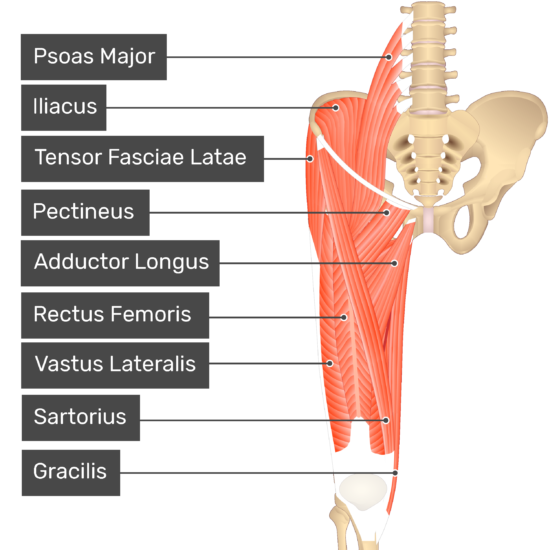Groin strains are commonly seen in sports with multi-directional and high velocity demands such as hockey and soccer. As a result, large sporting bodies have published preventative rehabilitation guidelines which are incorporated in pre-game warmups around the world to mitigate strain risk and reduce recurrence rates.
What are the adductors?
The adductor muscle group courses from the pelvis to the mid portion of the thigh bone on the inside of the leg. The three muscles responsible for the movement of the thigh towards the midline of the body include adductor longus, brevis and magnus.

Within the elite soccer population, adductor strains account for 14% of injuries. This is largely attributed to the greater eccentric muscle load and stability requirements. Due to this increase in sport-specific load, a reduction in strength has been correlated with greater strain incidence.
There is however varied correlation regarding muscle length and strains between hockey and soccer groups. Due to the greater mobility required for Hockey there is little to no relationship between muscle length and strain risk. Contrastingly, soccer players demonstrating adductor shortening during pre-season had an increased likelihood of strain.
Rehabilitation
Following strain there can be between 14-24 days absent from sport which exemplifies the importance of appropriate preventative preseason training and rehabilitation from injury. Rehabilitation protocols are centred on the following principles:
- Groin specific exercises: mobility, early and progressive loading and temporal training
- Non-groin exercises
- Running and sports function
To ensure adequate rehabilitation there are several criteria to be met prior to commencing the return to sport continuum. Patients must meet clinically pain-free criterium including:
- Pain free muscle contraction
- Pain free resisted training
- Sprinting
- Sport specific testing
The return to training is also graded with controls implemented for intensity and external factors. Once tolerating full team training, a progressive re-introduction to return to play involves entry at a lower level than goal, return to previous level and return to performance.
Your Physiotherapist and treating medical team will be involved at each step of the way. Physiotherapy management will include education, manual therapy via dry needling, massage and myofascial release techniques, mobility and progressively graded strengthening program.
References:
Tyler, T. F., Fukunaga, T., & Gellert, J. (2014). Rehabilitation of soft tissue injuries of the hip and pelvis. International journal of sports physical therapy, 9(6), 785–797.
Serner, A., Weir, A., Tol, J. L., Thorborg, K., Lanzinger, S., Otten, R., & Hölmich, P. (2020). Return to Sport After Criteria-Based Rehabilitation of Acute Adductor Injuries in Male Athletes: A Prospective Cohort Study. Orthopaedic Journal of Sports Medicine.
Kiel J, Kaiser K. Adductor Strain. [Updated 2020 Jun 24]. In: StatPearls [Internet]. Treasure Island (FL): StatPearls Publishing; 2020 Jan.

